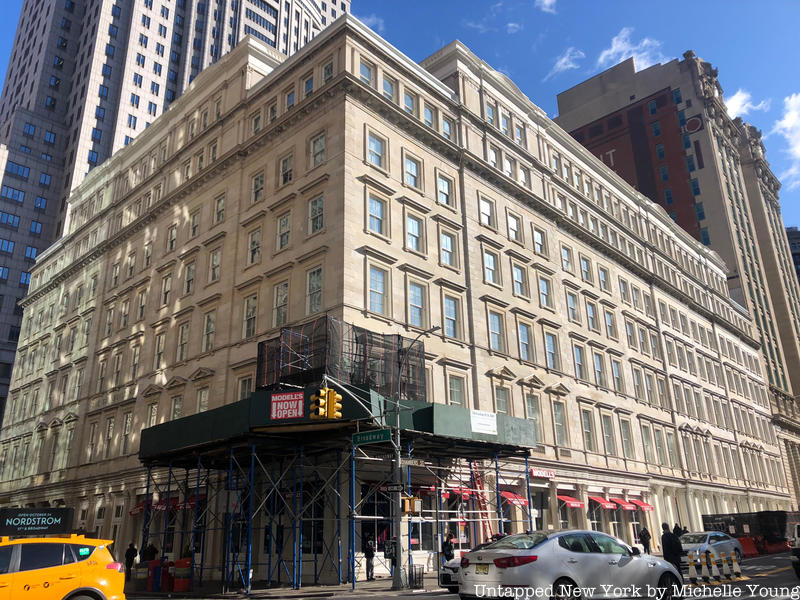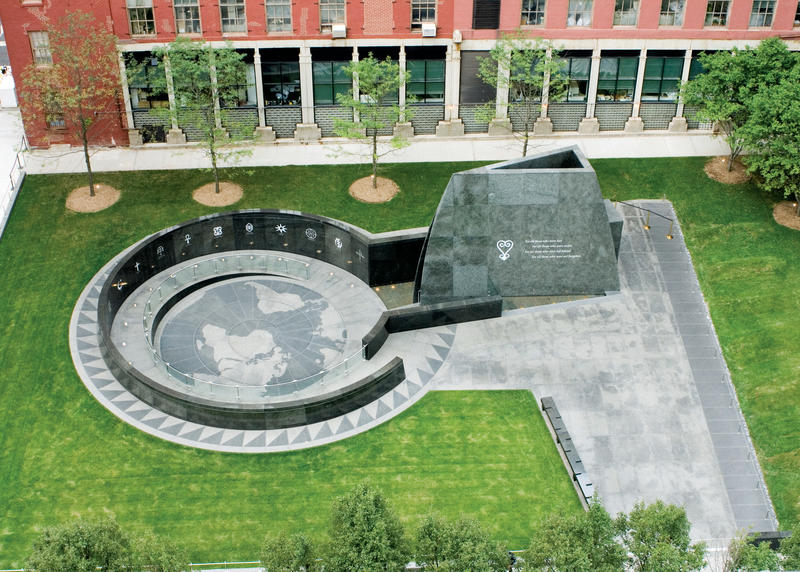 280 Broadway, the Stewart Building (1893).
280 Broadway, the Stewart Building (1893).
It is not only New York’s famous buildings that make it such an exciting city to explore, but at least as much its forgotten landmarks waiting to be discovered. Such a building is 280 Broadway, which sits just north of City Hall Park on a full block front between Chambers and Reade streets. Ask New Yorkers about the building and most would probably give a blank stare. Calling it by one of its historic names, the Stewart or Sun Building, probably won’t help many recognize it either.
Yet this “marble palace” was once one of the most celebrated buildings in New York and is viewed by architectural historians as one of the most influential of the 19th century. It is credited as the first department store in the country, built by retailer Alexander Turney Stewart after his dry goods business, A.T. Stewart & Co., outgrew a smaller space on Broadway.
Stewart developed the building at 280 Broadway in three phases, with the initial section at Broadway and Reade Street opening on September 21st, 1846. He expanded it south to Chambers Street in 1850 and east to the center of the block in 1853. He became one of the richest men of his time and in 1862 he opened a bigger store at Broadway and 10th Street, with 280 Broadway becoming home to his substantial wholesale and office operations.
Following Stewart’s death in 1876, it was converted to offices and two stories were added in 1884. It housed a mix of city agencies and private companies for the next few decades. The New York Sun newspaper moved there in 1919 and renamed it the Sun Building in 1928. That title still appears on the building, despite the fact the Sun left in 1950 when it was absorbed by the World-Telegram and the City of New York has owned it since 1966.
Regardless of what one calls it, 280 Broadway is one of the oldest non-residential buildings in New York City and full of interesting and unexpected history. Here are ten of its most intriguing secrets.
10. 280 Broadway Sits on Part of the African Burial Ground
 Photo courtesy National Park Service
Photo courtesy National Park Service
280 Broadway sits on part of the African Burial Ground, which was used by New York City’s population of enslaved and free blacks for about 100 years, from the late 17th to the late 18th centuries. The 6.6-acre cemetery extended from Broadway to Centre Street and was located on the outskirts of the city. However, the black community, which had few other options for burial of its dead, did not own the plot so as the City grew in the late 1700s new buildings and streets were built there, removing all visible traces while the burials remained beneath.
During construction of a new federal building directly north of 280 Broadway in the 1990s, extensive remains from the graveyard were uncovered, leading to the creation of the African Burial Ground National Monument. Given that part of 280 Broadway lies directly on the cemetery, it is likely that there are burials underneath it.





